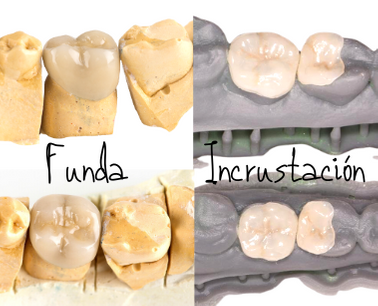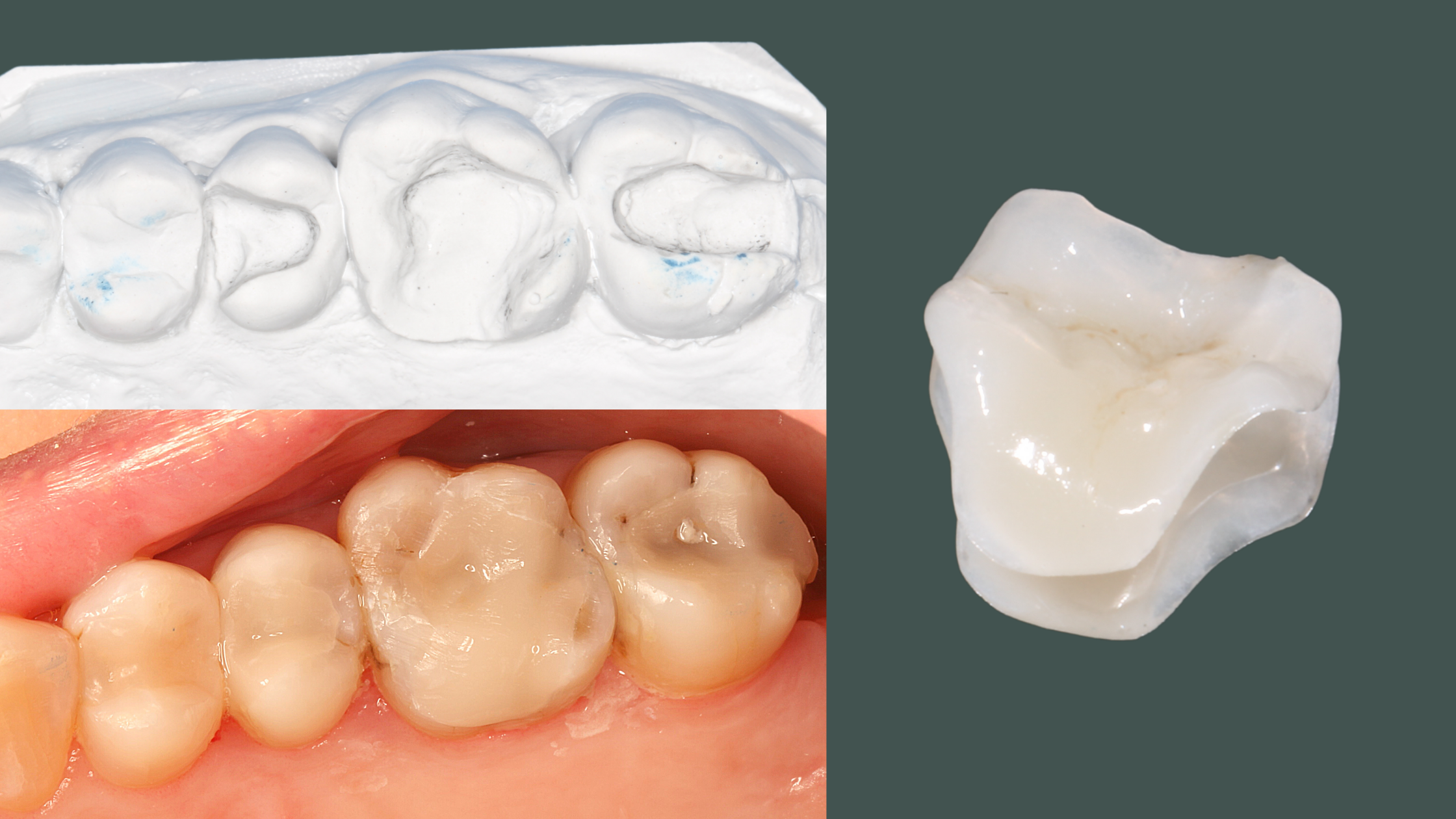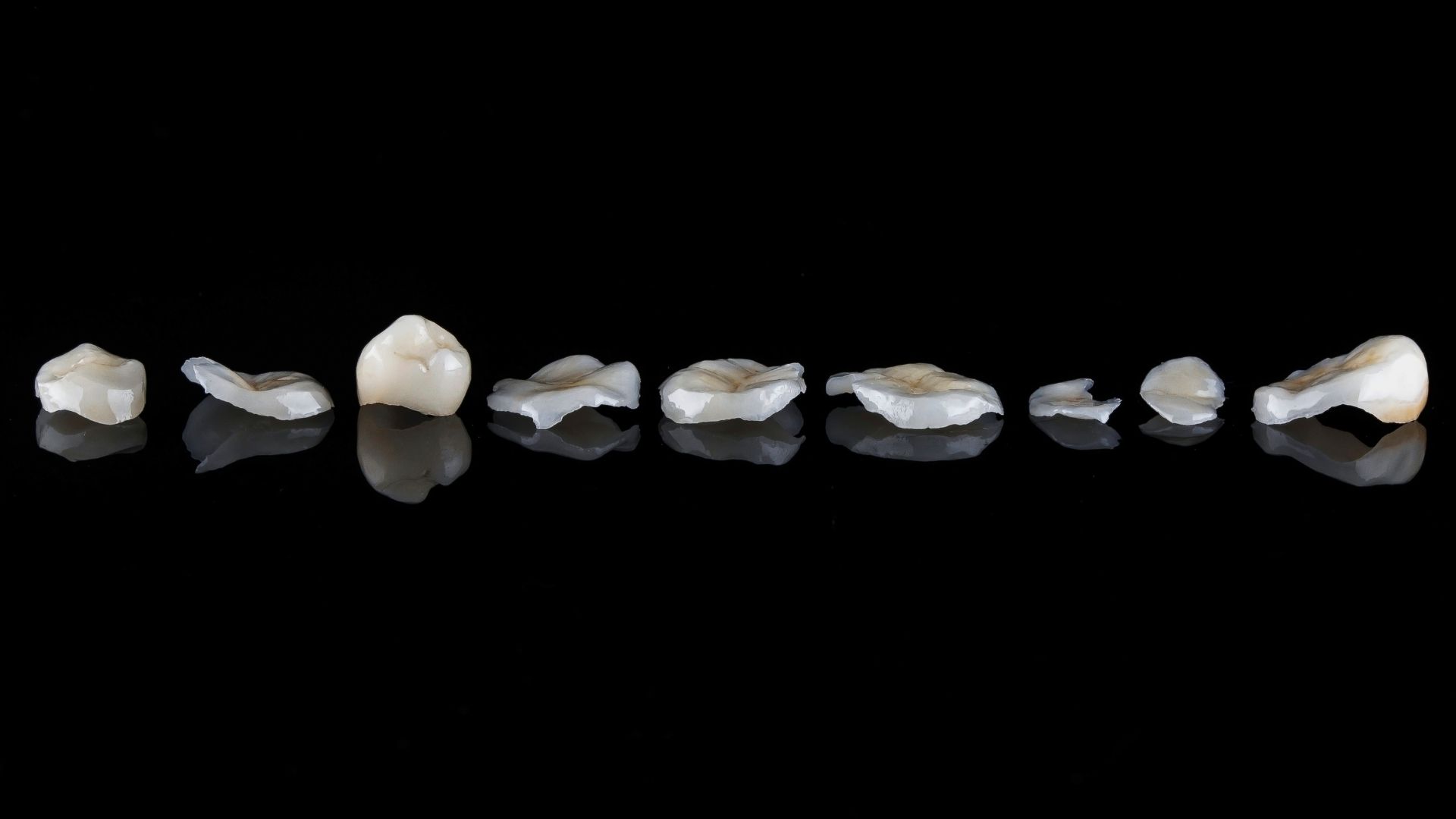Dental Inlays
What, when and why?
A dental inlay is a partial restoration used to rehabilitate posterior teeth (molars and premolars) that have suffered a moderate loss of tooth structure.
This damage to the teeth can be caused by two different reasons:
- – Due to caries: Caries that destroys a large part of the tooth, even affecting the nerve.
- – Due to severe dental wear and fissures as a result of different malocclusions or conditions, such as bruxism.
It is a custom-made block restoration that is cemented onto the remaining tooth.
How is it different from a dental cap?
Cap or Crown: It completely covers the tooth. Therefore, much less conservative grinding must be carried out, causing much more wear and tear on the tooth.
Inlay: Thanks to current bonding systems, we can restore the tooth only by adding the lost portion.

When is an inlay performed?
Instead of choosing other restorative treatments, such as a dental crown, the specialist may opt for the placement of a dental inlay.
The tooth must show an adequate anatomical shape, and the crown must be of sufficient length to retain this restoration.
If this is not the case, a full crown or full veneer would be indicated.
Why an inlay?
- It preserves the remaining tissue of the tooth, so the tooth is less fragile.
- It is harder and more durable than a filling.
- It has a better fit, so less food accumulates between tooth and tooth.
- It faithfully reproduces the dental anatomy, so it replaces lost function and aesthetics.tética perdidas.
How many visits are necessary to carry out the treatment?
Usually 2 or 3 visits will be necessary:
In the first visit the cavity of the damaged tooth will be prepared, records of the damaged tooth will be taken and the colour of the future inlay will be assessed. – At Ronda Dental we have an intraoral scanner that records our teeth with greater accuracy and precision.
Finally, at this first appointment, the cavity of the tooth surface will be provisionally sealed.
Based on the impressions taken, the dental technician will make a customised inlay and send it to the dental clinic.
In a second visit, the specialist in conservative dentistry will check the laboratory work, analysing the colour and the adaptation of the margins.
If everything is correct, the provisional sealing material will be removed, the cavity of the tooth surface will be prepared and the definitive inlay will be cemented onto the tooth.
In a third visit, a check-up will be carried out after the inlay has been cemented.


